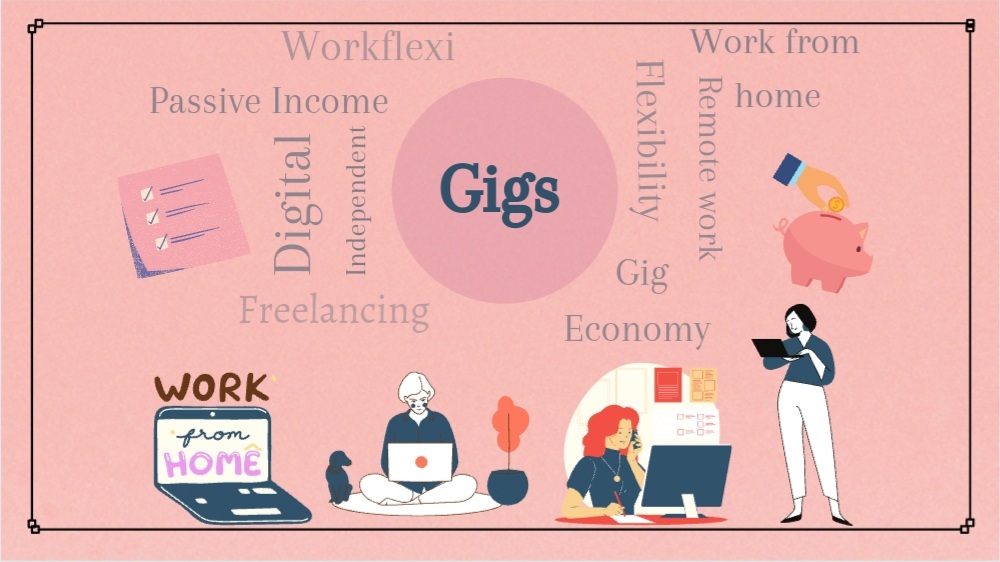Transitioning from Full-Time to Freelancing: A Step-by-Step Guide
Freelancing has gained immense popularity, offering professionals the flexibility and freedom to craft their work-life balance. However, switching to a freelance profession and moving from steady full-time employment is a big decision that needs serious thought and preparation. This blog will explore how to make this shift smoothly and successfully, focusing on the crucial aspects of freelancing and the differences between a freelance career and a full-time job.
A paradigm shift between full-time employment and freelancing
Knowing the key distinctions between a full-time job and a freelance career is the first step in switching to freelancing. Freelancing offers flexibility, autonomy, and the chance to work on various projects, but full-time positions provide stability, regular salaries, and set hours. The distinctions between these career choices are examined in more detail below:
Flexible hours versus set schedules:
Because they can choose their hours, freelancers can improve their work-life balance. On the other hand, full-time jobs often come with rigid schedules dictated by employers.
Income Variability vs. Steady Paycheck:
While a full-time job ensures a fixed income, a freelance career may involve fluctuating earnings based on the number and type of projects secured.
Independence vs. Job Security:
Freelancers operate as their bosses, making all decisions independently. Long-term employment security and perks like health insurance and retirement plans are provided by full-time jobs.
Transitioning from a full-time job to freelancing is not a one-size-fits-all process. To find out if freelancing fits with your ambitions, it’s critical to assess your personal and professional objectives.
Preparing for the Transition: Laying the Groundwork
Proper preparation is the cornerstone of a smooth transition from a full-time job to freelancing. Here’s how to lay a solid foundation:
Financial Planning for Your Freelance Career
Dealing with inconsistent income is the worst part of being a freelancer. Begin by saving up enough money to cover living expenses for three to six months. You can start your freelance business with peace of mind thanks to this safety net.
Additionally, research standard rates in your industry and calculate how much you need to earn monthly to meet your financial goals. Establishing reasonable yet competitive pricing is essential for long-term freelancing. Developing Your Portfolio Before Quitting Your Full-Time Work
Building a Portfolio Before Leaving Your Full-Time Job
Attracting clients requires a good portfolio. While still employed, start working on side projects or compiling examples of your previous work that showcase your expertise. In the cutthroat freelance market, having a polished website or a current LinkedIn page can also help you stand out and increase your trustworthiness.
Navigating the Transition: Moving from a Full-Time Job to a Freelance Career
Once your groundwork is in place, it’s time to make the transition. The following concrete actions can assist you in effectively navigating this change:
When and How to Quit Your Full-Time Job
Timing is everything. Ensure you have a steady stream of freelance clients or a reliable savings buffer before resigning. Give your employer adequate notice and maintain positive relationships; you never know when your former workplace might need freelance services.
How to Get Your First Independent Customers
Getting your first customers can be gratifying but difficult. Start by tapping into your existing network—reach out to colleagues, friends, and acquaintances to let them know you’re freelancing. Utilize platforms like Upwork, Fiverr, and Toptal to connect with potential clients.
Social networking may also be an effective technique for drawing in leads and demonstrating your abilities. Regularly share valuable content on platforms like LinkedIn to position yourself as an expert in your niche.
Overcoming Obstacles: The Reality of Freelance Careers
Although there are numerous benefits to freelancing, there are drawbacks as well.. Here’s how to address them effectively:
Freelance vs Full-Time Job – Managing Uncertainty
Freelancers often face inconsistent workloads and income. To mitigate this, focus on diversifying your client base and setting clear contracts with payment terms. Develop a routine that fosters productivity, even during slower periods.
Work-Life Balance in a Freelance Career
The inclination of freelancers to conflate their personal and professional lives might lead to burnout. Maintaining balance can be facilitated by designating a specific workspace and establishing regular work hours. Use productivity tools like Trello, Asana, or time trackers to manage tasks efficiently.
Sustaining Long-Term Success in Your Freelance Career
After you have established yourself as a freelancer, scalability and ongoing improvement are essential for long-term success.
Upskilling and Staying Relevant in the Market
The freelance landscape is ever-evolving.To stay ahead, keep your talents current and pick up new ones. Industry conferences, webinars, and online courses are great ways to stay competitive.
Developing Your Freelance Career Gradually
As your freelance career grows, consider diversifying your income streams, such as offering workshops, creating digital products, or transitioning from solo freelancing to building a small team. Scaling up can increase your earning potential and provide greater stability.
Embracing the Freedom of a Freelance Career
Making the switch from a full-time job to freelancing is a path that calls for bravery, forethought, and perseverance. By understanding the differences between freelance vs full-time job dynamics and planning strategically, you can overcome challenges and create a thriving freelance career.
Working on your terms and having unmatched independence are two benefits of freelancing. Start by building a strong foundation, stay adaptable, and continually strive for growth. With determination and the right approach, you can achieve success in your freelance career and enjoy the flexibility and independence it brings.


